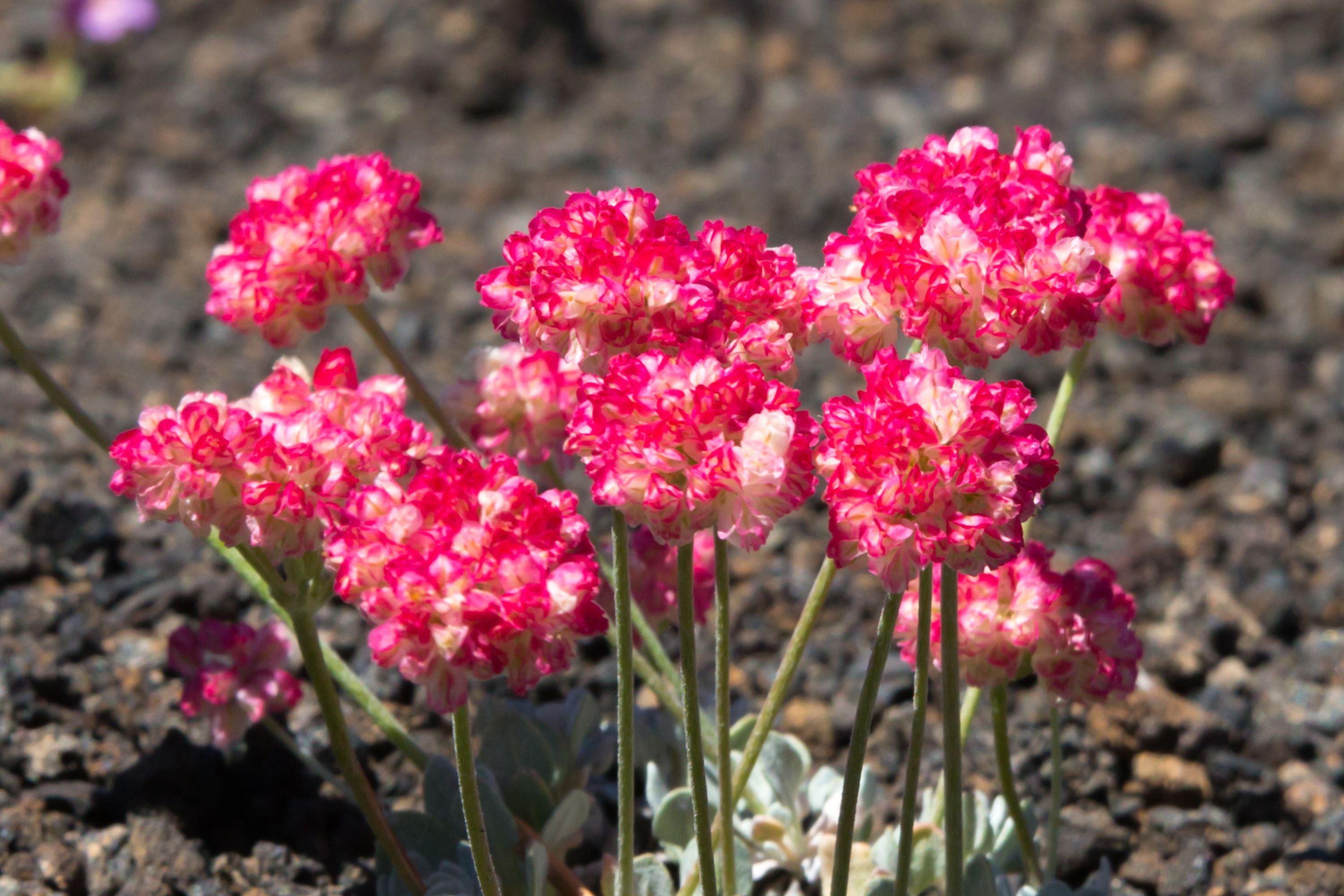Cushion buckwheat
(Eriogonum ovalifolium)

Description
Eriogonum ovalifolium is a species of wild buckwheat known by the common name cushion buckwheat. It is native to western North America from California to Alberta, where it is a member of many plant communities in varied habitats, including the sagebrush steppe and alpine regions. In general, the species is a tough perennial herb which forms mats in gravelly soil or amongst rocks and produces erect inflorescences up to 35 centimeters in height, blooming from early to mid-summer.The flowering stems are leafless. The pale green to gray leaves at the base of the plant are rounded and woolly and have petioles. Eriogonum ovalifolium var. vineum, the Cushenbury buckwheat, is endemic to the San Bernardino Mountains of San Bernardino County, California. It is federally listed as an endangered species of the United States, and the main threat to its existence is mining. Eriogonum ovalifolium var. williamsiae, the steamboat buckwheat, is known only from the Steamboat Hills near Reno, Nevada. It is also a federally listed endangered species, and threats to it have been reduced but the populations are still quite small. Eriogonum is a genus of flowering plants in the family Polygonaceae. The genus is found in North America and is known as wild buckwheat. This is a highly species-rich genus, and indications are that active speciation is continuing. It includes some common wildflowers such as the California buckwheat (Eriogonum fasciculatum). The genus derived its name from the Greek word erion meaning 'wool' and gonu meaning 'knee or joint'. The author of the genus, Michaux, explained the name as describing the first named species of the genus (E. tomentosum) as a wooly plant with sharply bent stems ("planta lanata, geniculata"). Despite sharing the common name "buckwheat", Eriogonum is part of a different genus than the cultivated European buckwheat and than other plant species also called wild buckwheat. Eriogonum species are used as food plants by the larvae of some Lepidoptera (butterflies and moths). An example of a butterfly that uses this plant for food is the Lycaena heteronea. Several of these are monophagous, meaning their caterpillars only feed on this genus, sometimes just on a single taxon of Eriogonum. Wild buckwheat flowers are also an important source of food for these and other Lepidoptera. In some cases, the relationship is so close that Eriogonum and dependent Lepidoptera are in danger of coextinction.
Taxonomic tree:







